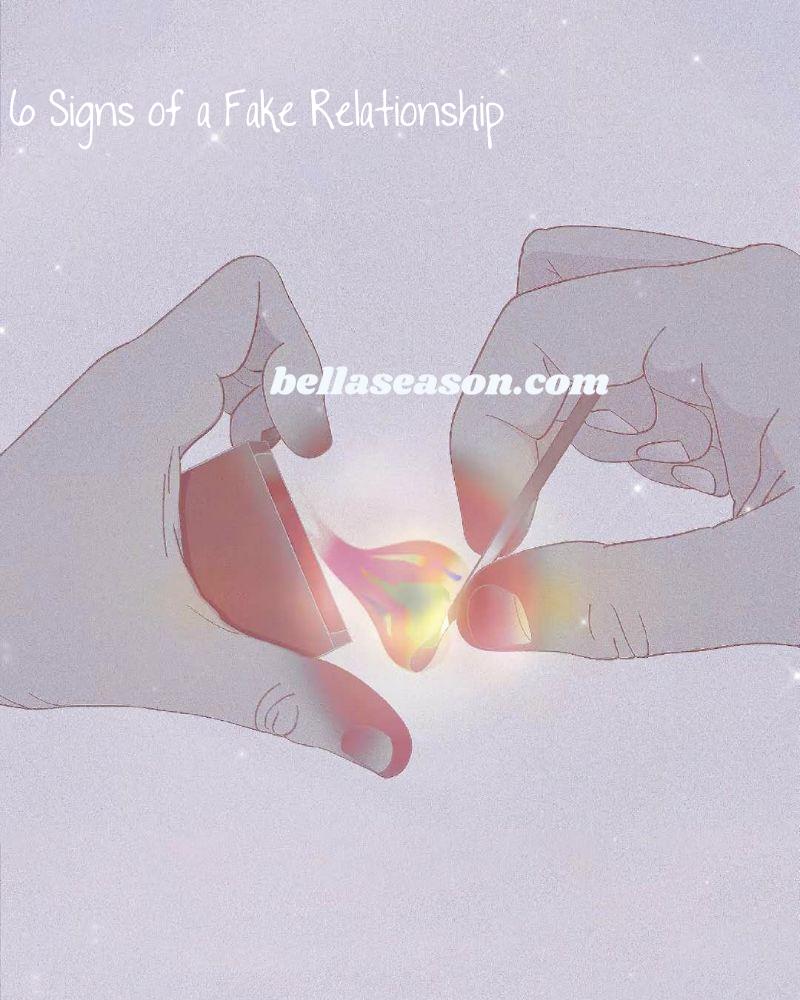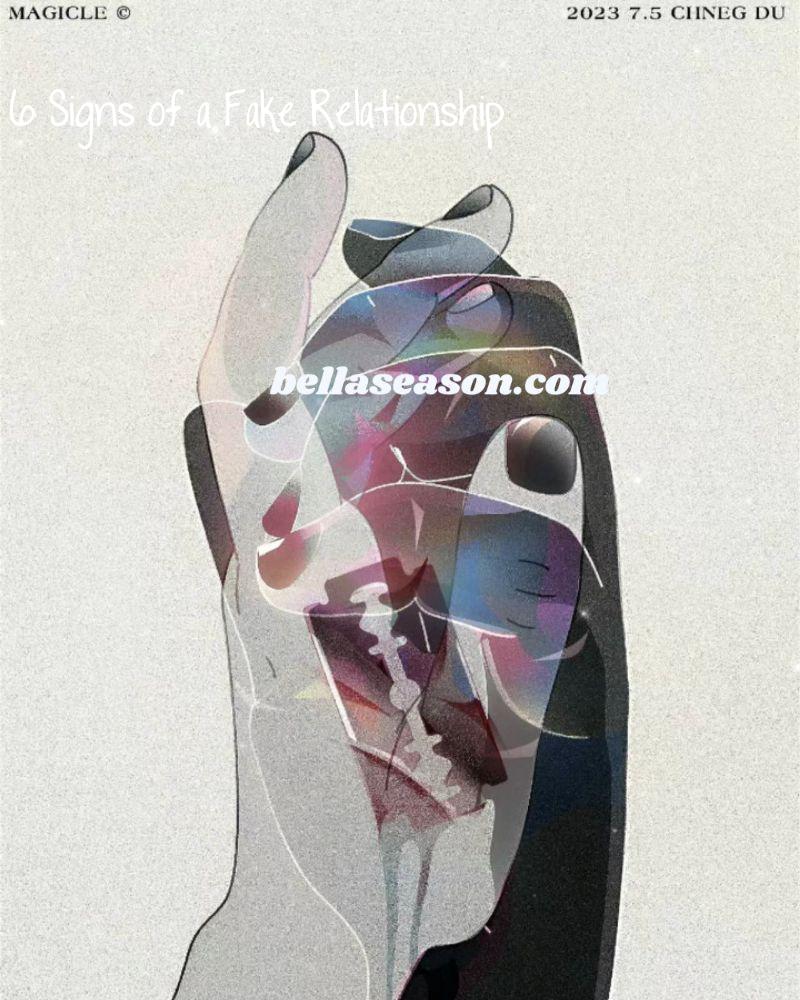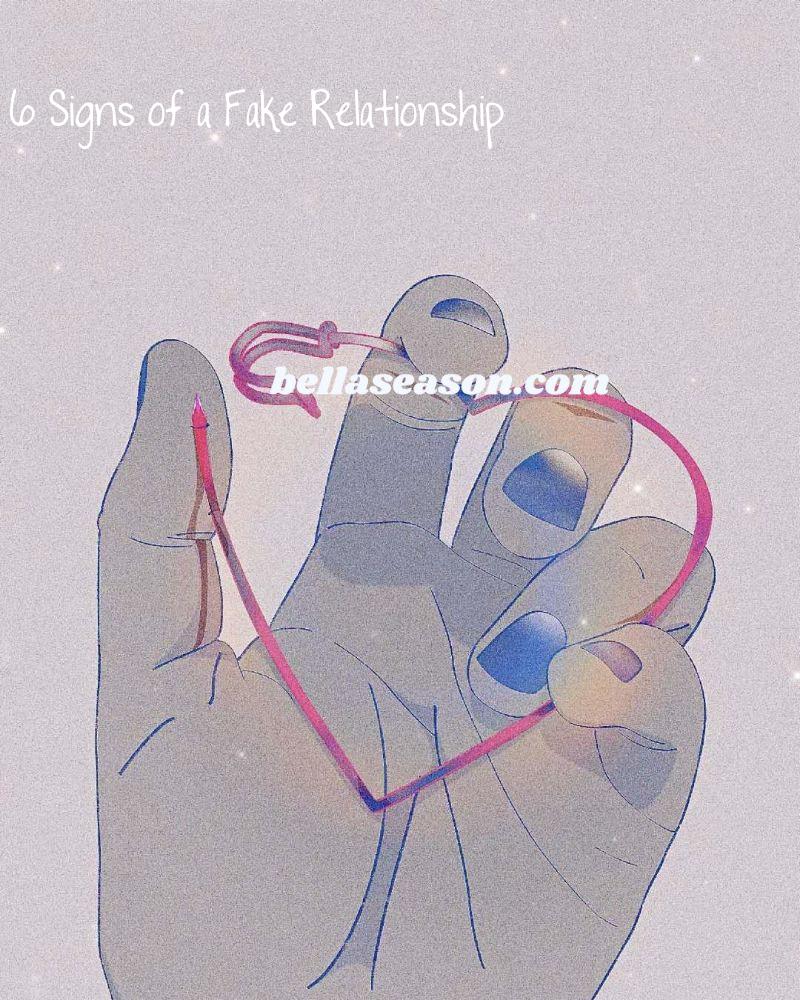It seems that many couples experience a state of fake relationships.
Even though the two characters are together, they do not feel love or closeness. While there are formal commitments, they do not truly understand each other, as if both are pretending and wearing “masks” of personality.


Today, let’s discuss the idea of irrelationship or fake relationship. Such relationships often involve fake dating or fake marriage scenarios where individuals may start dating for their own reasons yet find themselves feeling like a completely different person in the relationship.
Despite doing romantic things or portraying happiness on social media, these couples struggle to make the relationship work in real life because they forget to be authentic and talk openly about their true feelings.
There is a high likelihood that they do not admit to themselves the challenges they face, and continue the charade all the time, just as if they were acting in the same way as before.
What are the 6 Signs of Fake Relationships?
Psychologist Mark B. Borg summarize the 6 characteristics of fake relationship as “GRAFTS” in his famous book IRRELATIONSHIP How we use Dysfunctional Relationships to Hide from Intimacy:
- Good: You habitually play the role of the “good person” in the relationship. You seem close, and to others, you appear as intimate as genuine couples. You care, respect, and provide emotional security for each other. You treat each other in the way you think is “good,” and even if you have grievances, you don’t easily express them, believing this will elicit the expected response from your partner. A fake person may exhibit behaviors that seem caring but lack genuine emotional connection.
- Right: You believe there is a “right way” in the relationship. You think that only by doing things a certain way can you fulfill your role’s obligations. For example, if your partner thinks “a boyfriend/girlfriend should…,” you try your best to meet those expectations. Fake relationship often follows a template where both parties perform their roles under certain expectations, making “how you should be” more important than “how you really are.” Because both fear revealing their true selves and acknowledging real issues, they cannot truly communicate or resolve these issues. They end up creating a defensive mechanism together, playing out this “intimacy.”
- Absence: You are missing each other’s true emotional needs. Although you meet the expectations of being “good” and “right,” your real emotional needs are absent. These needs are often ignored, hidden, and unexpressed. The lack of emotional intimacy is a key indicator of a fake relationship.
- Funny: You use jokes to avoid sincere conversations, pushing each other away. While humor is fine, be aware if it is a way to avoid genuine dialogue (a defensive mechanism). Constantly making jokes can both cater to the other’s feelings and prevent you from expressing your true thoughts. For example, Chandler from Friends often uses humor to avoid intimacy because of his fear of closeness due to his parents’ failed marriage.


- Tense: There is an unconscious tension when you are together. To maintain the “good” and “right” façade, individuals in the relationship often experience unconscious tension, being very sensitive to the other’s emotions but unwilling to reveal their own anxiety. This is the main difference from genuine intimacy. True intimacy involves caring and understanding each other, while pseudo-intimacy involves maintaining a safety distance to avoid “danger” (such as exposing one’s true thoughts, which could lead to a breakup). Maintaining this façade can be emotionally draining for both partners.
- Smart: You handle the relationship with “rationality.” Pseudo-intimacy participants are not used to expressing emotions and instead rely on a highly rational approach. This may make someone highly efficient at work but can keep them distant from real intimacy. The emotional connection is absent.
Why Do We Unintentionally Fall into Fake Love?
Fake relationship can also be understood as a defense mechanism for “avoiding intimacy in relationships.” Borg believes that such defensive mechanisms develop due to early interactions with parents or close family members. Some individuals enter fake relationships for personal gain, often at the expense of their partner’s emotions.
Those accustomed to fake love often had to “care for” their parents emotionally in childhood. Even before they could care for others, they were required to prioritize meeting others’ needs, unable to express their own needs. For a child, the greatest fear is being abandoned by their parents, even if they are emotionally abusive. They might still strive to maintain the relationship, leading to a role reversal where the child becomes the “caretaker” of the parents:
- If parents are emotionally down, the child tries to make them happy.
- If parents are anxious, the child hides their own fears.
- If parents’ self-esteem is unstable, the child does things to make them feel valuable.
- If parents cannot meet the child’s emotional needs, the child suppresses their own emotional expression.
Children growing up in this environment may transfer this “role-playing” defensive mechanism into intimate relationships. Fearing loss and rejection becomes more important than facing reality, leading them to manage “uncertain risks” rather than expressing real emotional needs, being “seen,” and building intimacy. They unconsciously create a “false self,” burying their “true self” deep inside to ensure its safety. Recognizing and avoiding fake relationships is crucial for one’s well-being.


If you want to learn more about fake relationship, Mark Borg’s most popular book IRRELATIONSHIP will solve all your concerns and questions.
How to Move Beyond Fake Relationship to a Genuine Relationship
It is not easy, but it is possible to step out of pseudo-intimacy. Here are some practices to help you move beyond pseudo-intimacy:
- Explore Self-Honesty in Communication: Before establishing intimacy, explore honest communication with your partner. Expressing your emotional needs is crucial but should be based on understanding and accepting yourself. Instead of quickly improving the relationship, treating relationship issues as an opportunity for self-development and growth may be more important. In a genuine relationship, sincere apologies are crucial for mending emotional connections after mistakes or conflicts, unlike in fake relationships where apologies may be superficial and fail to address deeper issues.
For example: Try recording the most troubling issue in your current relationship and your coping patterns:
- What are your emotions when you realize this issue? What did you do?
- When you notice your defensive mechanism, avoid self-criticism; understand that defense mechanisms have served a protective role.
- Ask yourself: Why do I use this mode? What past situations does it remind me of? What happened then?
- When you understand this defense mechanism, reconsider from a relatively detached perspective: Is this coping method still helpful? What reasons suggest that I can use a different approach now?
- “4-2-4” Communication Method: Practice non-defensive communication. Borg proposed a 4-2-4 communication method to effectively remove defenses and achieve empathy during conflicts:
- Identify a current issue troubling you both and imagine negotiating it at a table divided in half.
- Assume that both parties share responsibility for the issue, with each responsible for between 40% and 60%. Start negotiations from this 20% middle ground.
- Set a 3-minute time limit for one party to speak about their responsibility regarding the issue.
- During this time, the listening party must remain silent, without interrupting or criticizing, and avoid labeling the other person.
- The other party then has 3 minutes to speak and so on.
- Do not use the other’s disclosures to attack or manipulate them.
- Ensure that everyone feels safe during self-disclosure.
- Continue sharing until both feel satisfied with the communication progress.
- After sharing, record feelings, such as “What was it like to expose vulnerabilities?” and “What new things did I learn about them?”
In repeated practice, gradually expand the area of self-disclosure, making it a natural part of expressing emotions and needs. Achieving a healthy relationship involves mutual support and personal growth, where both individuals inspire one another’s development, celebrate achievements, and provide constructive feedback.


What Does True Love Involve?
- Understanding each other in all aspects of life and spirit, and a willingness to learn about each other. A real relationship evolves and matures over time, contrasting with the façade often seen in fake relationships.
- Acknowledging, admitting, and communicating differences and conflicts.
- Accepting parts of each other that do not meet expectations, viewing each other as complete, complex individuals rather than mere roles. In romantic relationships, what starts as a fake connection can evolve into genuine feelings.
- Revealing vulnerabilities and expressing needs.
Achieving this is challenging as it requires exposing one’s needs and vulnerabilities, facing rejection and uncertainty, but this is the allure of intimacy: Only those willing to take risks can have genuine trust and experience the deep, close connections between people. Maintaining mental health is crucial in navigating these intimate relationships, as it ensures overall well-being and quality of life.
I hope you have the courage to “risk for love.” May your intimate relationships provide you with a sense of security and affection, creating enough space for your “true self” to grow.





